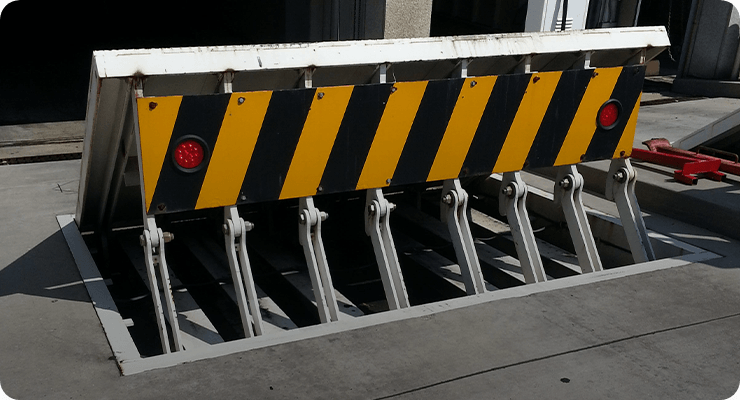Some Of Wedge Barriers

How Wedge Barriers can Save You Time, Stress, and Money.
The staying pressure used to
the cam web cam deploy release wedge plate 16 may be provided offered an electromechanical actuator 84 or other actuator. The spring setting up 54 and the actuator 84(e. Wedge Barriers. g., electromechanical actuator)might run with each other to convert the web cam and raise the wedge plate 16.
As mentioned above, the spring assembly 54 puts in a continuous pressure on the camera, while the electromechanical actuator might be regulated to apply a variable pressure on the cam, thereby allowing the lifting and reducing( i. e., deploying and pulling back )of the wedge plate 16. In specific embodiments, the continuous pressure used by the springtime assembly 54 may be adjustable. g., electromechanical actuator) is disabled. As will be appreciated, the springtime setting up 54 might be covered and shielded from particles or various other components by a cover plate(e. g., cover plate 68 shown in FIG. 4) that may be significantly flush with the elevated surface area 38 of the structure 14. As mentioned over, in the released placement, the wedge plate 16 offers to block access or travel past the obstacle 10. The obstacle 10(e. g., the wedge plate 16 )may block pedestrians or lorries from accessing a building or path. As talked about above, the obstacle 10 is affixed to the anchor 30 safeguarded within the structure 14,

front braces 71. Consequently, the linkage assemblies 72 might pivot and revolve to enable the collapse and expansion of the affiliation settings up 72 throughout retraction and release of the bather 10. The affiliation settings up 72 reason movement of the wedge plate 16 to be restricted. If an automobile is traveling towards the deployed wedge plate 16(e. For instance, in one condition, the safety and security legs 86 might be prolonged duringmaintenance of the barrier 10. When the safety legs 86 are deployed, the safety and security legs 86 sustain the weight of the wedge plate 16 against the surface 12. Consequently, the training system 50 might be informative post shut off, serviced, eliminated, replaced, etc. FIG. 5 is partial viewpoint view of a personification of the surface-mounted wedge-style barrier 10, showing the webcam 80 and the cam surface areas 82 of the lifting mechanism 50. Especially, 2 webcam surfaces 82, which are described as lower web cam surface areas 83, are placed below the web cam 80. The lower cam surface areas 83 may be fixed to the surface area 12 (e. For instance, the reduced webcam surfaces 83 and the installing plate 85 may create a single item that is protected to the support 30 by bolts or various other mechanical fasteners. In addition, two cam surfaces 82, which are referred to as top webcam surface areas 87, are positioned over the webcam 80 and paired to (e. In other personifications, look at more info stepping in layers or plates might be positioned in between the surface area 12 and the lower sites web cam surfaces 83 and/or the wedge plate 16 and the top cam surfaces 87 As stated above, the camera
80 translates along the web cam surfaces 82 when the wedge plate 16 is lifted from the withdrawed position to the released placement. Additionally, as pointed out above, the spring setting up 54 (see FIG. 3 )might offer a pressure acting upon the cam 80 in the direction 102 using spring rod 58, which might lower the force the electromechanical actuator 84 is needed to relate to the web cam 80 in order to actuate and lift the wedge plate 16. 1 )to the released placement(see FIG. 4). As shown, the webcam 80 consists of track wheels 104(e. g., rollers), which call and translate along the webcam surfaces 82 throughout procedure.